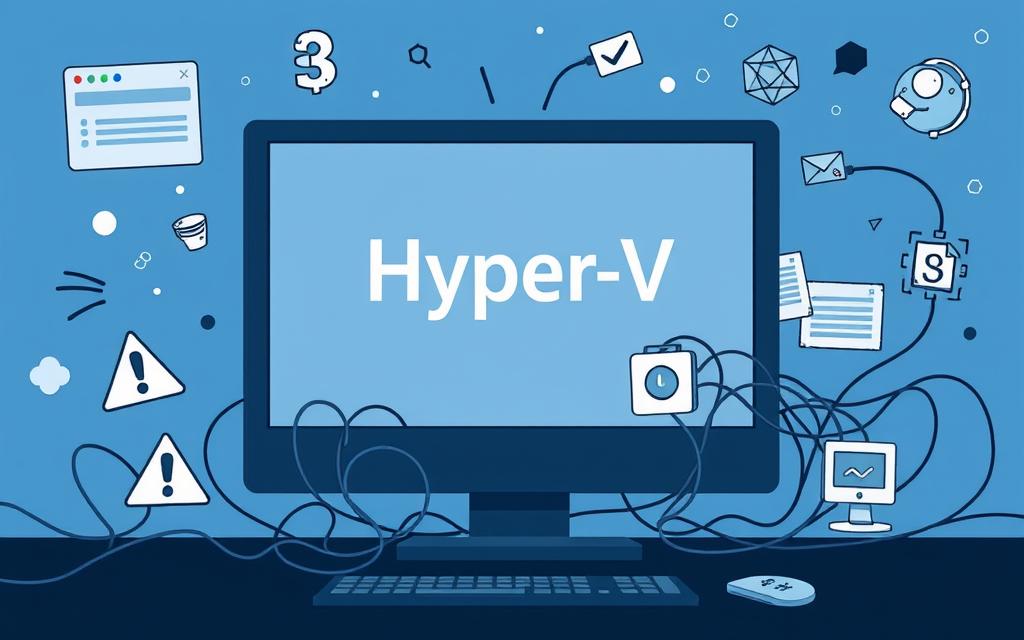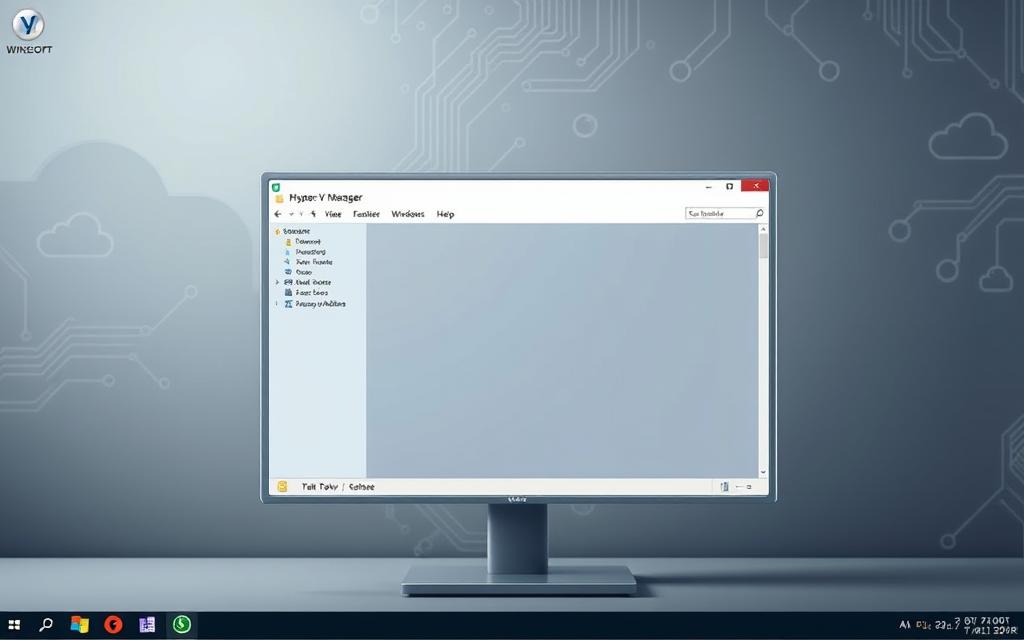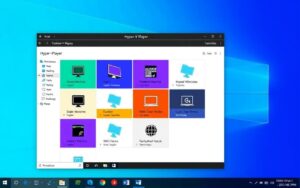Table of Contents
Many people find Hyper-V missing in Windows, which stops them from running virtual machines well. It’s key to know why this happens if you want to fix Hyper-V. The main issues come from incompatibility with the system or not enough hardware support. For example, Windows 10 or 11 Home versions don’t support Hyper-V, which is a big problem for some.
Also, if your computer doesn’t have enough memory or has an unsupported processor, you might not see Hyper-V. It’s been found that half of the virtual machines might not show up in Hyper-V for some users. Others have seen their virtual machines disappear. The recent updates from Microsoft have made things more confusing. Sorting out these problems is vital for using Hyper-V without any trouble.
Understanding Hyper-V Requirements
To use Hyper-V effectively, knowing what is needed is key for smooth running. It’s important to understand both the right operating system and hardware needs. This avoids the usual problems when setting it up.
Operating System Compatibility
Hyper-V works with specific versions of Windows only. It is compatible with Windows 10 Pro, Enterprise, and Education, and also Windows 11 Pro and Enterprise. If you have Windows 10 or 11 Home, you can’t use Hyper-V. Check your Windows version to make sure it will work with Hyper-V and dodge installation hurdles.
Hardware Necessities
For Hyper-V to work, your PC needs to meet certain hardware specs. Your computer must have a 64-bit processor with SLAT. The CPU also needs to support VM Monitor Mode Extensions, often shown as Intel’s VT-x. At least 4 GB of RAM is also needed for Hyper-V to work right. If your PC doesn’t meet these specs, you won’t be able to use Hyper-V. Look at this resource for help with compatibility problems.
Common Issues Leading to Windows Hyper-V Not Showing
Several factors can stop Hyper-V from showing up in Windows. Knowing them helps to fix issues more easily. Often, not having enough system permissions or conflicts with other virtualisation software are to blame. Figuring out the main issue helps make the fix process smoother.
Insufficient System Permissions
Sometimes, users can’t get Hyper-V to work because they don’t have the needed permissions. If you don’t have administrative rights, turning on Hyper-V can be tough. You might see that commands don’t run right in a normal command prompt or PowerShell. Running commands as an administrator, or in an elevated session, solves this problem by giving you full access.
Conflicting Virtualisation Software
Conflicts with other virtualisation software can also cause Hyper-V problems. Using software like VMware Workstation or VirtualBox might stop Hyper-V from working right. These applications might need you to turn off Hyper-V to work properly. Thus, you might need to disable or uninstall these to get Hyper-V back up and running.

For deeper insights into fixing issues with Hyper-V, there are many sources that offer extra information and tips.
| Issue | Possible Cause | Recommended Action |
|---|---|---|
| Insufficient Permissions | User lacks administrative rights | Run commands in elevated command prompt |
| Virtualisation Software Conflict | Competing applications such as VMware | Disable or uninstall other virtualisation tools |
| Resource Depletion | Inadequate hardware resources | Add additional hardware or adjust VM allocations |
| Corrupt Checkpoints | Improper handling of virtual hard disks | Manage checkpoints carefully |
Troubleshooting Steps for Hyper-V Visibility
When you find Hyper-V is not showing up, taking a step-by-step approach is key. The issue often lies with BIOS virtualisation settings or how Hyper-V was turned on. Getting a grasp on these areas can make solving visibility problems simpler.
Check BIOS Settings for Virtualisation
First, make sure your PC’s BIOS/UEFI settings have virtualisation tech enabled. Restart your computer, and enter the BIOS settings by pressing a key like F2. Look under Advanced settings and check that Virtualisation Technologies are on. This is vital because wrong BIOS virtualisation settings could stop Hyper-V from working right.
Enabling Hyper-V through Control Panel and Command Line
With BIOS settings correct, ensure Hyper-V is on in Windows next. Activate Hyper-V via the Control Panel by choosing “Turn Windows features on or off.” Tick the Hyper-V option and restart your computer. Or, if you’re good with command line tools, using this PowerShell command works too:
Enable-WindowsOptionalFeature -Online -FeatureName Microsoft-Hyper-V -All
You can also try the DISM command:
DISM /Online /Enable-Feature /All /FeatureName:Microsoft-Hyper-V
After using these commands and restarting, Hyper-V should show up as expected. If not, looking at community forums for advice might help you solve the Hyper-V visibility issues.
Conclusion
To make sure Hyper-V works well, it’s key to check if your system is compatible and meets the needed hardware specs. Troubleshooting steps like checking BIOS settings and turning on Hyper-V are very important. Solving conflicts with admin rights or software can greatly improve how well this tool works.
Keep your Windows system and settings updated to avoid issues. It’s important to regularly check and update, especially after big Windows updates. Some virtual machines might have problems, but creating new Hyper-V virtual machines often fixes them.
Staying proactive and following these steps helps in managing Hyper-V smoothly. Keeping up with the latest updates and settings lets users get the most out of Hyper-V. This ensures their virtual server environments run at their best.
FAQ
Why is Hyper-V not showing in my Windows installation?
There are a few reasons Hyper-V might not appear. These include the Windows version, your computer’s hardware, permission levels, or other virtualisation software conflicts. Make sure your Windows supports Hyper-V, like the Pro or Enterprise editions. Also, check if your system has the right specifications.
Which versions of Windows support Hyper-V?
Hyper-V works on Windows 10 Pro, Enterprise, and Education and also on Windows 11 Pro and Enterprise. It’s not available for the Home editions of Windows 10 and 11. Always check your Windows version to ensure it’s compatible.
What are the hardware requirements for enabling Hyper-V?
For Hyper-V, you need a 64-bit processor with SLAT (Second Level Address Translation). Your CPU must also support VM Monitor Mode Extensions (Intel’s VT-c). Plus, you need at least 4 GB of RAM. If your computer doesn’t meet these specs, you can’t use Hyper-V.
What should I do if I lack administrative permissions for Hyper-V?
If you don’t have admin rights to enable Hyper-V, there’s a workaround. Use an elevated command prompt or a PowerShell session. You must have administrative privileges to make these changes.
How can conflicting virtualisation software affect Hyper-V?
Other virtualisation software like VMware Workstation or VirtualBox can interfere with Hyper-V. These programs might need you to disable Hyper-V to run well. If you’re facing this issue, uninstalling or disabling other virtualisation software might help.
How do I check BIOS settings for virtualisation?
To check your computer’s BIOS for virtualisation settings, restart it. As it boots up, press F2 or another key to enter the BIOS menu. Look for Virtualisation Technologies under Advanced settings. Make sure they’re turned on.
What methods can I use to enable Hyper-V?
Enabling Hyper-V can be done in a couple of ways. Go to the Control Panel, look for “Turn Windows features on or off,” and tick Hyper-V. Don’t forget to restart your computer. You can also use PowerShell or Command Prompt with specific commands. For PowerShell, use Enable-WindowsOptionalFeature -Online -FeatureName Microsoft-Hyper-V -All. For DISM command, type DISM /Online /Enable-Feature /All /FeatureName:Microsoft-Hyper-V. After these steps, Hyper-V should be ready to use.
How can I troubleshoot visibility issues with Hyper-V?
To fix visibility issues with Hyper-V, start by checking if your operating system supports it. Make sure your hardware is compatible and that you have admin rights. Remove any conflicting software. Also, check your BIOS settings for virtualisation support. Remember to follow the right steps to enable Hyper-V through the Control Panel or command line.









